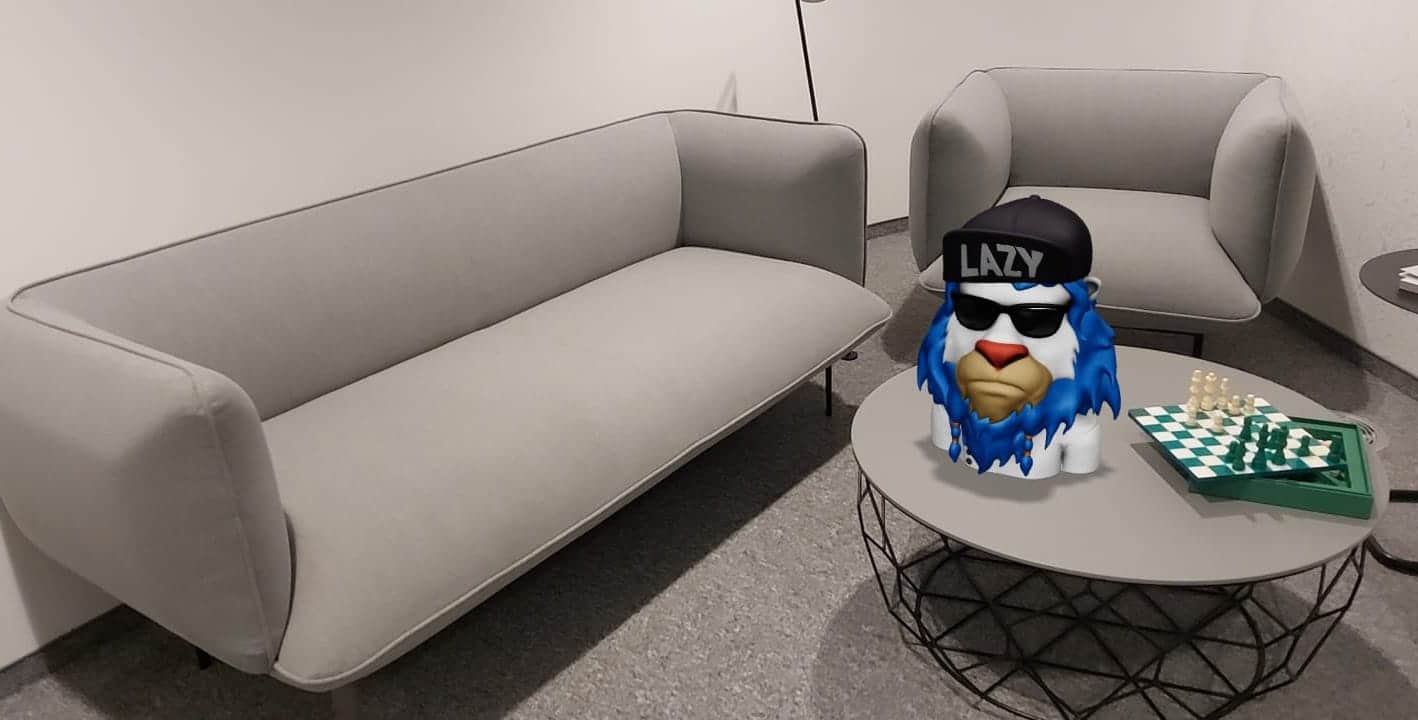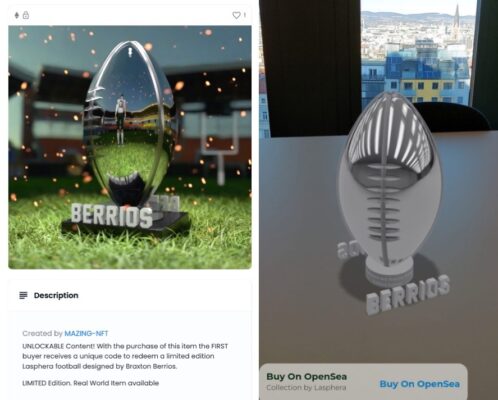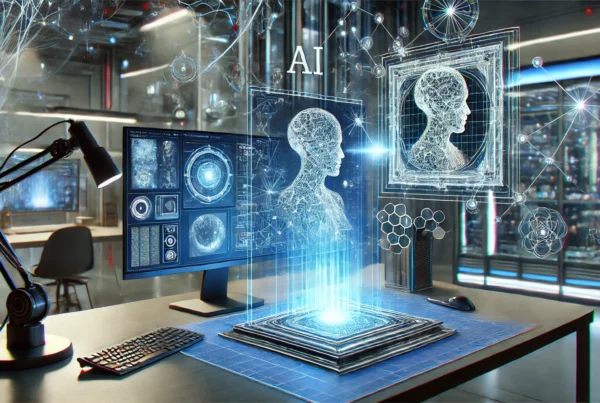Wie wird Augmented Reality für NFTs genutzt?
Die Nutzung von NFTs zusammen mit Augmented Reality wird eine Reihe komplett neuer und spannender Einsatzbereiche entfachen. Dieser Artikel liefert Informationen darüber wie NFTs hergestellt werden, wie man diese heutzutage handelt und wie Augmented Reality als Baustein dafür genutzt werden kann.
Die Abkürzung NFT kommt aus dem Englischen und steht für Non-Fungible-Tokens. Man kann es also mit einer digitalen Art von Wertpapieren vergleichen. Jedes NFT ist einzigartig und kann nicht gegen ein anderes NFT eingetauscht werden. Auch zeichnen sich NFTs durch ihre digitale Seltenheit aus. Das Internet schafft täglich Unmengen an Daten und Informationen, welche endlos kopiert und weiterverbreitet werden können. Blockchain Technologien machen die digitale Seltenheit von NFTs möglich. Jeder der ein NFT besitzt kann sich sicher sein, dass auf diesem sein Echtheitszertifikat und die jeweiligen Rechtsansprüche “eingeprägt” sind.
Wie werden NFTs erstellt?
Jeder, der seine digitalen Kreationen wie Kunst, Musik oder Fotografie verkaufen und teilen möchte, kann NFTs erstellen.
UrheberInnen können das Format ihrer NFTs wählen. Ein NFT aus einer beliebigen Datei erzeugt werden. Dabei kann es sich um ein digitales Gemälde, ein Foto, einen Text, eine Audiodatei oder ein Video von einem bemerkenswerten Ereignis handeln. Auch andere Produkte wie Krypto-Sammlerstücke, virtuelle Gegenstände aus Videospielen wie Avatare, Waffen und Währungen können als NFTs verkauft und gekauft werden.
Der Prozess beim Erstellen von NFTs wird als „Minting“ bezeichnet. Der Begriff bezieht sich auf den Prozess der Umwandlung eines digitalen Gegenstands in einen Vermögenswert auf der Blockchain. Ähnlich wie Metallmünzen erstellt und in Umlauf gebracht werden, werden NFTs nach ihrer Erstellung geprägt. Nach diesem Prozess ist das NFT fälschungssicher und schwerer zu manipulieren. Es kann anschließend gekauft und gehandelt werden.
In neuester Zeit ist es üblich geworden, dass digitale Inhalte wie Kunstwerke im NFT-Format zum Verkauf angeboten werden. Viele Künstler verkaufen Ihre Werke mittlerweile als NFT und auch Museen wie z.B. das Belvedere sind bereits in den Trend eingestiegen. Das Wiener Museum bietet digitale Ausschnitte vom weltberühmten Gemälde „Der Kuss“ von Gustav Klimt als NFT zum Verkauf an.
Eines der wohl bekanntesten Beispiele im NFT Handel ist die viral gewordene Cat Nyan Animation, die für rund 600 000 Dollar verkauft wurde.
Wie kann man AR für NFTs erstellen?
Was genau Augmented Reality ist und welche Arten es gibt erfährt Ihr hier.
Wie nutzt man Augmented Reality für NFTs? AR Technologie kann unsere Sicht auf ein NFT-Kunstwerk verändern, indem sie ihm eine weitere Dimension verleiht. Wenn ein Kunstwerk zum Beispiel zweidimensional ist, kann es mit dem Einsatz von Augmented Reality dreidimensional gemacht werden. So kann ein Gemälde virtuell in die eigenen vier Wände projiziert werden – wie in der realen Welt.
Künstler können mit Augmented Reality Ihren Kreationen mehr Tiefe und Kontext geben. Man kann an jedem Ort und zu jeder Zeit ein beliebiges Kunstwerk mit Hilfe eines Smartphones oder Tablets in die reale Welt platzieren. Einmal umgesetzt sieht das Ganze zum Beispiel so aus: Wenn man von einem Kunstwerk in einer digitalen oder sogar realen Galerie fasziniert ist kann man es im NFT Format kaufen und somit jederzeit virtuell im eigenen Zuhause aufrufen oder bei Bekannten angeben ;). Zusätzlich dazu können dem Werk durch AR weitere visuelle Komponenten oder begleitende Klänge hinzugefügt werden.
Bei Mazing funktioniert das ganze ohne App.
Von den Möglichkeiten Augmented Reality im Zusammenhang mit NFTs zu nutzen profitieren jedoch nicht nur KünstlerInnen. Hier ein paar weitere Türen die verschiedensten Branchen durch NFTs mit AR eröffnet werden:
Vom Tourismus bis zur Modeindustrie: Wie AR Objekte durch NFTs gehandelt werden
Augmented Reality ermöglicht es digitale Inhalte und Vermögenswerte in unserer realen Umgebung darzustellen. Geografisch positionierte Inhalte in AR sind zum Beispiel nur an einem bestimmten geografischen Ort zu sehen. Auch virtuell wird es möglich sein Augmented Reality Immobilien in Form von NFTs zu kaufen und zu verkaufen. An Standorten an denen Tourismus an Relevanz genießt kann man auf diese Weise auch interessante AR Inhalte für BesucherInnen positionieren und AR Führungen anbieten.
Auch im Bildungsbereich kann Ausstattung durch Augmented Reality digital nachgeahmt werden. Lehrkräfte können eine neue Art von Kursen anbieten und digitale Lehrinhalte in Form von NFTs gleichzeitig nutzen und zum Verkauf anbieten.
Große Modemarken wie Gucci verzichten auch nicht darauf sich den Trend mit dem NFT Handel zunutze zu machen. Auf Roblox, einer Metaverse und Gaming Plattform, hat die Marke bereits digitale Formen ihrer echten Kollektionen zum Anprobieren zur Verfügung gestellt und bietet diese auch zum Kauf an.
Ein Blick in die Zukunft
NFTs können Augmented Reality Inhalte und Erlebnisse in digitale Vermögenswerte umwandeln. Diese sind durch Blockchain Technologien einfach zu kaufen und zu verkaufen. Neue Märkte und Möglichkeiten öffnen sich durch deren Einsatz wodurch maßgeschneiderte AR Erlebnisse geschaffen werden. Normalen zweidimensionalen Objekten und Kunstwerken lassen sich durch Augmented Reality mehr Tiefe verleihen und ermöglichen es NFT BesitzerInnen jederzeit darauf zuzugreifen.
4 Schritte zum AR NFT
- Marktplatz aussuchen
Um ein NFT zu verkaufen braucht man einen Marktplatz. Diese unterscheiden sich alle in Bezug auf die Funktionen und die Preise für die Einträge. Mintable, Rarible und Opensea sind wohl die Bekanntesten. - 3D / AR Asset erstellen
Zunächst muss der digitale Vermögenswert identifiziert werden, den man mit einem Token versehen möchte. Eine Vorschau kann man das als jpg oder GIF hochladen mit einem Link zur Augmented Reality Anwendung. Bei Mazing funktioniert die AR Ansicht in einem Klick, ohne App. - Wallet verbinden und minten
Wie man sein wallet verbindet bzw. die Assets minten kann ist je nach Markplatz unterschiedlich. Die jeweiligen Markplätze liefern dazu Anleitungen. - Vermarkten
Mit WebAR von Mazing war das vermarkten von NFTs noch nie so einfach. Augmented Reality liefert einen zusätzlichen Wert und hebt das NFT von der Konkurrenz ab. So lässt es sich einfacher und schneller eine Community aufbauen.
Brauchst du Hilfe bei der Erstellung von deinen NFTs?






